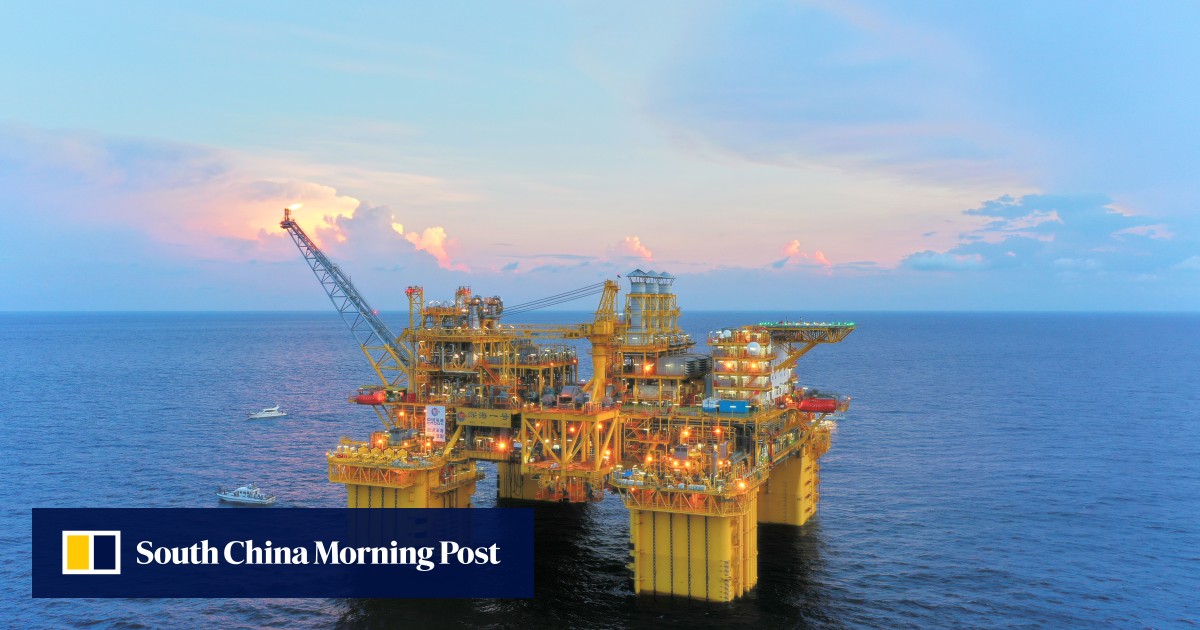At its peak, the Yacheng 13-1 gas field produced more than 3.5 billion cubic metres (bcm) of natural gas annually, of which about 3 bcm was destined for Hong Kong. This supply provided more than 25% of Hong Kong’s electricity generation needs, powering millions of homes and businesses. Over the years, the gas field has supplied more than 70 bcm of natural gas to Hong Kong, covering about 70% of the city’s natural gas consumption.
LNG’s role in reducing Hong Kong’s carbon footprint
To ensure a stable and diversified energy supply, CNOOC has added LNG to its portfolio. The Guangdong Dapeng LNG Terminal, completed in 2006, was China’s first LNG import project and a key development for Hong Kong.
Over the past 18 years, this terminal has supplied about 21.1 bcm of LNG to Hong Kong, accounting for approximately 33% of the city’s natural gas consumption. This LNG supply has significantly contributed to reducing Hong Kong’s carbon footprint.
Compared to equivalent coal combustion, the use of LNG has reduced carbon dioxide emissions by 54.64 million tons, sulphur dioxide by 500,000 tons, and particulate matter by 260,000 tons. These reductions are equivalent to planting over 100 million trees, highlighting the environmental benefits of this clean energy source.
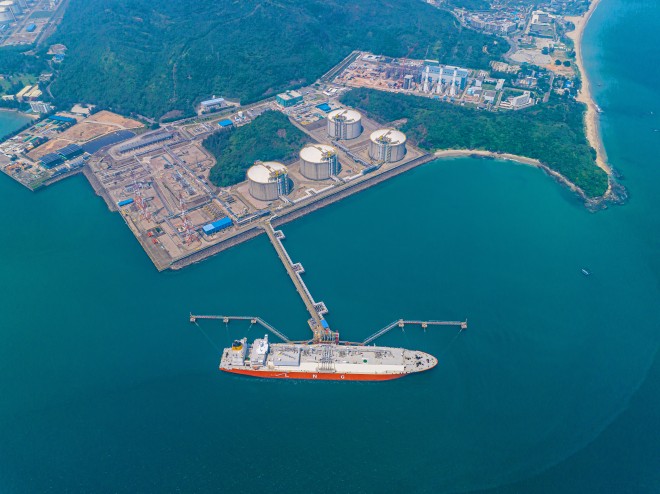
The advent of deepwater gas fields: Shenhai-1
In 2021, CNOOC commissioned the Shenhai-1 (Deep Sea No. 1) ultra-deepwater gas field, the first deepwater gas field fully operated by an enterprise in China. Located in the South China Sea, the field has maintained stable production, with cumulative gas production exceeding 8 billion cubic metres and condensate oil production exceeding 800,000 cubic metres.
The natural gas from Shenhai-1 is transported through an 87-kilometre subsea pipeline connected to the Y13-1 pipeline, ensuring a steady supply to Hong Kong. The successful operation of Shenhai-1 demonstrates CNOOC’s technological prowess and commitment to exploring new offshore energy fields. The ongoing construction of the second phase of Shenhai-1 is expected to increase annual gas production from 3 billion cubic metres to 4.5 billion cubic metres, further supporting Hong Kong’s energy supply.
Enhancing supply resilience: Hong Kong Offshore LNG Terminal
On September 21, 2023, CNOOC unveiled the world’s largest offshore LNG facility— The Hong Kong Offshore LNG Terminal. This state-of-the-art facility can berth the world’s largest Floating Storage Regasification Units (FSRUs) and LNG carriers, ensuring a new and reliable source of natural gas for Hong Kong.
Strategically located and advanced in design, this terminal can handle large volumes of LNG, which are regasified and delivered via two subsea pipelines to the Black Point and Lamma Island power stations. These infrastructures not only enhance Hong Kong’s energy security but also support its transition to clean energy, aligning with regional carbon neutrality goals.
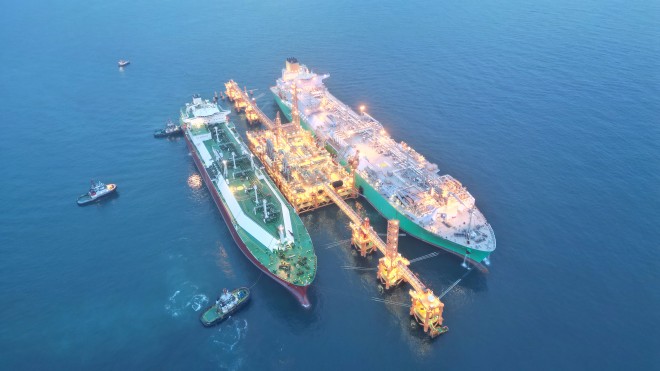
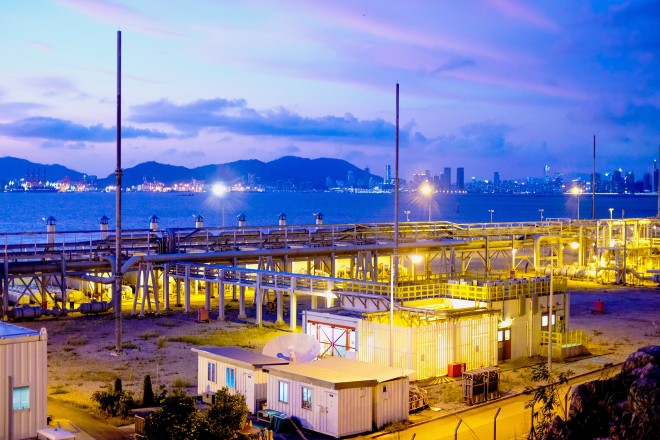
Supporting sustainability: green energy initiatives
CNOOC’s commitment to sustainable development extends beyond the supply of natural gas. The company has implemented numerous initiatives to promote green energy and reduce carbon emissions.
For example, the Guangdong Dapeng LNG Terminal harvests the cold energy released during LNG regasification for various applications, including aquaculture and cold chain logistics. The cold energy recovery project at the Guangdong Dapeng LNG Terminal is a model of innovative environmental management.
By harvesting cold energy to maintain water temperatures suitable for high-value fish farming, CNOOC has created a sustainable aquaculture model. This project not only improves the quality and yield of aquaculture products, but also significantly reduces energy consumption and greenhouse gas emissions.
Robust financial performance
CNOOC’s first-quarter 2024 results highlight robust growth and significant achievements. The company’s net production reached 180.1 million barrels of oil equivalent, an increase of 9.9% year-on-year. This growth was primarily driven by project start-ups and increased production from existing fields in China and overseas.
In China, net production grew by 6.9% to 123.2 million barrels of oil equivalent, thanks to contributions from new projects. Overseas production also increased significantly by 16.9%, mainly due to higher production from assets in Guyana and Canada.
Despite the challenging environment of declining international oil prices, CNOOC’s strong financial performance is reflected in its net profit, which increased by 23.7% year-on-year to Rmb39.7 billion.
Latest oil discoveries
CNOOC’s exploration efforts in the South China Sea, Bohai Sea and Pearl River Mouth Basin have achieved significant progress. Discoveries such as the Kaiping South Oilfield in the South China Sea and the Qinhuangdao 27-3 Oilfield in the Bohai Sea have added substantial reserves to CNOOC’s portfolio.
The Kaiping South Oilfield, located in the eastern part of the South China Sea, has an average water depth of about 500 metres. The KP18-1-1d discovery well was drilled to a depth of 3,462 metres, with a total pay zone of 100.6 metres of oil and gas.
The well tested at an average rate of about 7,680 barrels of oil and 520,000 cubic feet of natural gas per day. Continuous exploration has confirmed in-place reserves of 102 million tons of oil equivalent at the Kaiping South Oilfield.
Elsewhere, the Qinhuangdao 27-3 Oilfield, located in the central and northern waters of the Bohai Sea, has an average water depth of about 25 metres. The QHD27-3-3 discovery well was drilled to a depth of 1,570 metres, with a total oil layer of 48.9 metres.
The oilfield tested at about 742 barrels of oil per day from a single well. Continuous exploration has confirmed in-place reserves of 104 million tons of oil equivalent at the Qinhuangdao 27-3 Oilfield.
Recent project start-ups
CNOOC’s focus on increasing production capacity is reflected in its recent project start-ups in various regions.
The Bozhong 19-6 Gas Field Block 13-2 Area 5 Well Area Development Project, located in the central Bohai Sea with an average water depth of about 23 metres, includes one wellhead platform and plans to drill 10 development wells. It is expected to achieve peak daily production of approximately 5,800 barrels of oil equivalent by 2026.
In addition to the two Bohai Sea projects launched this year (Suizhong 36-1/ Lvda 5-2 Oilfield Secondary Adjustment and Bozhong 19-6 Gas Field Block 13-2 Area 5 Well Area Development), CNOOC plans to launch two more Bohai Sea projects in 2024—the Bozhong 19-2 Oilfield Development Project and the Suizhong 36-2 Oilfield Block 36-2 Development Project.
In the South China Sea, the Lufeng 12-3 Oilfield Development Project has been put into production, with an expected peak output of 29,500 barrels per day by 2024.
Internationally, the Mero 2 Project in the Santos Basin of Brazil has successfully launched. Mero 2 is the second development phase of Brazil’s third-largest oilfield, the Mero Oilfield. The project comprises 16 development wells, designed to produce up to 180,000 barrels of oil per day. The project’s floating production storage and offloading (FPSO) unit is one of the largest in the world, highlighting CNOOC’s capability to manage large offshore projects.
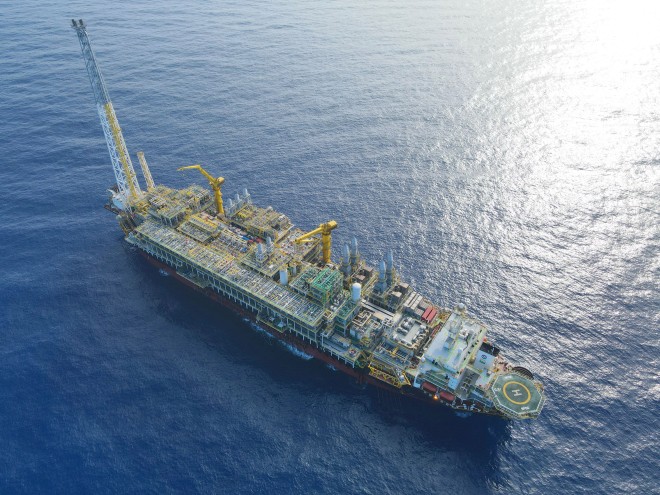
Advancing clean energy initiatives
Looking ahead, CNOOC will continue to strengthen its partnership with Hong Kong and explore new cooperation opportunities. The company’s plans include expanding deepwater exploration and developing new gas fields to ensure a sustainable energy supply for the region.
CNOOC’s strategic vision aligns with Hong Kong’s energy goals, focusing on increasing the share of natural gas in the energy mix, enhancing energy efficiency, and reducing carbon emissions.
Leveraging advanced technologies and innovative practices, CNOOC supports Hong Kong’s transition to a low-carbon economy, contributing to the broader sustainable development goals of the Greater Bay Area.
CNOOC’s ongoing efforts include continuous development of clean energy and technologies. The company is actively exploring the potential of offshore wind power, including the successful grid connection of the world’s first semi-submersible ‘double hundred’ deepwater floating wind power project.
The ‘CNOOC Guanlan’ project is located near the Wenchang Oilfield in the western South China Sea, 136 kilometres from the coast, with a water depth of 120 metres. This is the world’s first semi-submersible ‘double hundred’ deepwater floating wind power project, operating in waters over 100 metres deep and more than 100 kilometres offshore.
The main production facility of the project, ‘CNOOC Guanlan’, is China’s first deep-sea floating wind power platform, providing power to offshore oilfields under the harshest marine conditions. The platform has an installed capacity of 7.25 megawatts, capable of generating up to 22 million kilowatt-hours of electricity, equivalent to saving nearly 10 million cubic metres of natural gas annually and reducing carbon dioxide emissions by 22,000 tons.
On the other front, CNOOC is advancing carbon capture and storage (CCS) technology, with the Enping 15-1 CCS project set to become China’s first offshore million-ton CCS project.
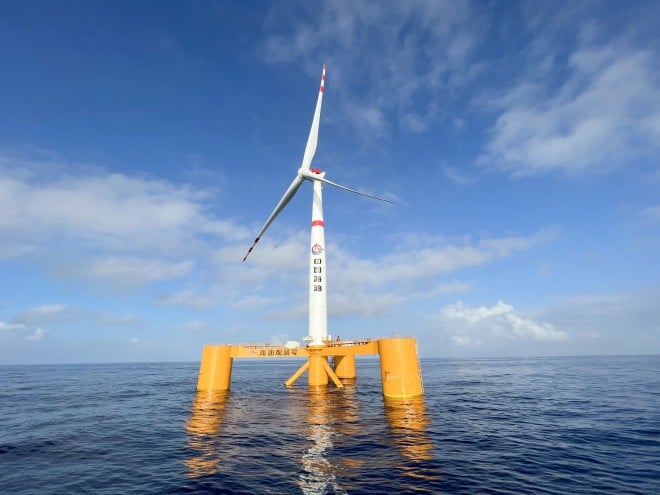
Shaping Hong Kong’s energy future
CNOOC’s partnership with Hong Kong is a remarkable story of growth, cooperation and sustainable development. From the construction of the Y13-1 pipeline to the introduction of LNG and the development of advanced deepwater gas fields, CNOOC has consistently provided reliable energy, supporting Hong Kong’s development.
As CNOOC continues to explore new fields and expand its business, its contribution to Hong Kong’s energy security and sustainable development goals will undoubtedly remain an indispensable part of the region’s prosperity. Through innovative solutions, strategic investments and a steadfast commitment to corporate social responsibility, CNOOC is poised to play a leading role in shaping the energy landscape of Hong Kong and the Greater Bay Area in the coming years.

